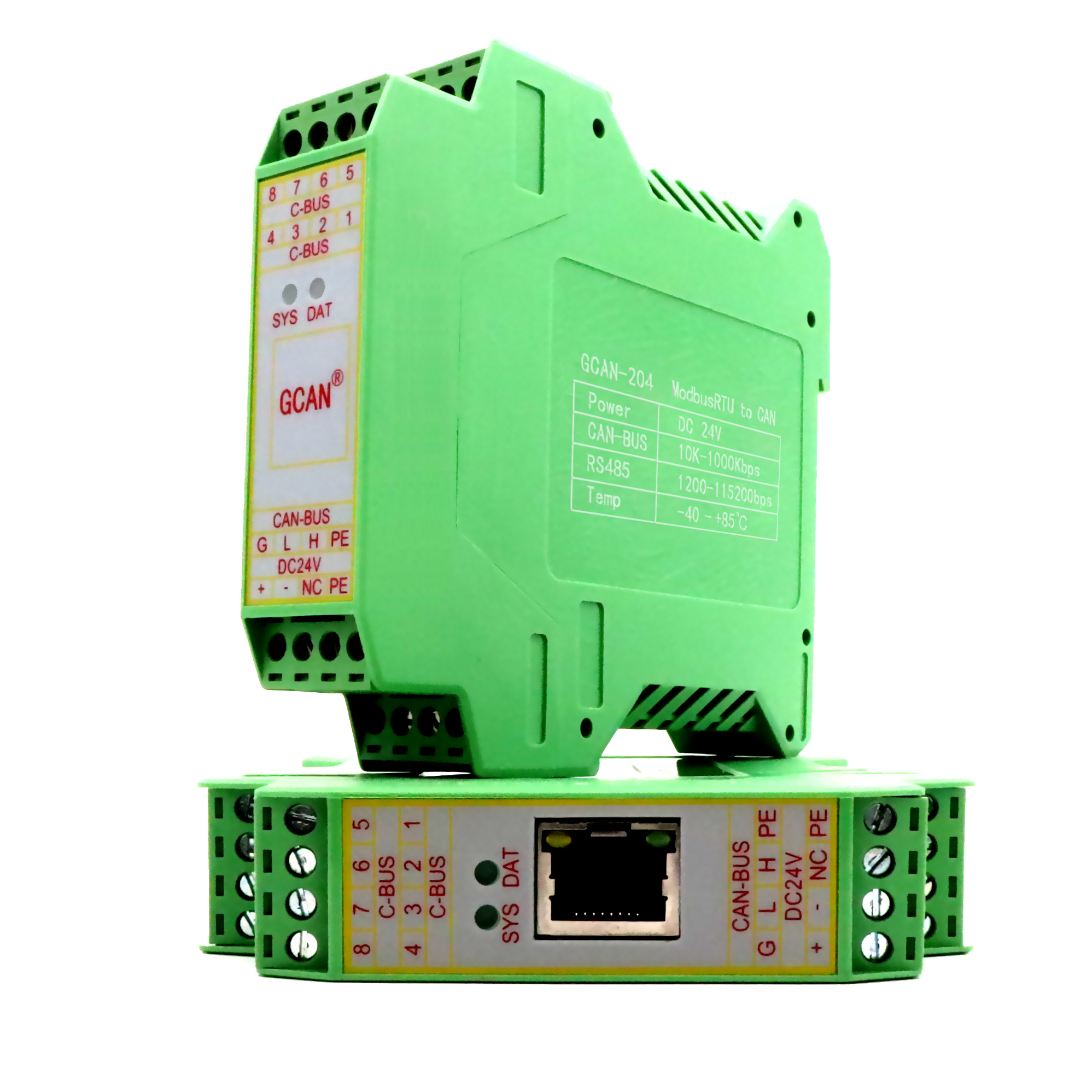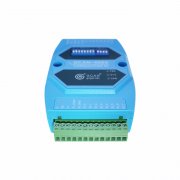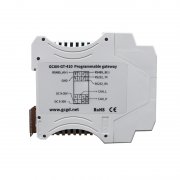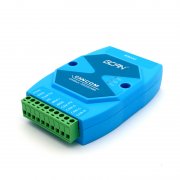Practical Intelligent can Bridge Repeater Equipment
Industrial Automation Production Line Controlled by CAN Bus Compared with other buses, CAN bus has the following advantages:
1. CAN bus has fast data transmission speed and long data transmission distance. Within 40 meters, the baud rate of CAN bus is 1000Kbps, and gradually slows down beyond 40 meters. The baud rate at 10 kilometers is 5Kbps. General field buses have no signal at this distance, and their fastest data transmission speed is not as fast as CAN bus.
2. The CAN bus uses differential voltage signal to transmit information. The two twisted pairs always maintain a voltage difference of about 2V. As long as this voltage difference exists, the CAN bus CAN work normally. This also enables the CAN bus to have super-strong ability to resist external interference. It is very convenient to maintain in the later period and is relatively worry-free.
3. CAN bus has strong ability to connect nodes. Without other help, one CAN bus can connect 110 nodes at the same time. Although this is only a theoretical value, it is not much different in actual use. In general, there are many nodes that need to work together at the same time on automobiles or industrial automation production lines, and CAN bus just meets their needs. As a result, CAN bus is widely used in the fields of fire engine linkage, industrial automation production line, artificial intelligence development, tram control and so on, and is reputed as the most promising industrial bus.
Because of the many advantages of CAN bus, many users want to use CAN bus to replace other types of buses. As a result, the CAN to serial port tool that CAN realize the mutual conversion between CAN bus and 232 and 485 buses appeared, the Ethernet to CAN tool that CAN realize the data conversion between Ethernet bus and CAN bus appeared, and the Bluetooth to CAN tool that can realize the mutual conversion between Bluetooth signals and CAN bus data also appeared.
Friends who often use the CAN bus to work know that the application of the CAN bus has three basic common sense. One is that the high CAN bus should be connected with the high CAN bus, the low CAN bus should be connected with the low CAN bus, the other is that a 120 ohm resistor should be connected on the bus, and the last is that the baud rate between the two connected CAN buses should be consistent in order to communicate normally, otherwise it is really a cross-service chat. However, as we said above, we want two CAN bus systems with different baud rate values to communicate in real time. This requires a tool that can coordinate the baud rates of both parties inside. This tool is an intelligent CAN bridge repeater, such as GCAN-206 of Shenyang Guangcheng Technology. Shenyang Guangcheng Technology Gcan-206 Intelligent CAN Bridge Repeater is a high-performance CAN bus communication relay module that integrates 2-way CAN interfaces. GCAN-206 intelligent CAN bridge repeater can be compatible with USB2.0 bus full speed specification. GCAN-206 intelligent CAN bridge repeater is adopted, which can not only relay different CAN networks without connecting PC, but also enable CAN networks with different baud rates to communicate with each other.
1. CAN bus has fast data transmission speed and long data transmission distance. Within 40 meters, the baud rate of CAN bus is 1000Kbps, and gradually slows down beyond 40 meters. The baud rate at 10 kilometers is 5Kbps. General field buses have no signal at this distance, and their fastest data transmission speed is not as fast as CAN bus.
2. The CAN bus uses differential voltage signal to transmit information. The two twisted pairs always maintain a voltage difference of about 2V. As long as this voltage difference exists, the CAN bus CAN work normally. This also enables the CAN bus to have super-strong ability to resist external interference. It is very convenient to maintain in the later period and is relatively worry-free.
3. CAN bus has strong ability to connect nodes. Without other help, one CAN bus can connect 110 nodes at the same time. Although this is only a theoretical value, it is not much different in actual use. In general, there are many nodes that need to work together at the same time on automobiles or industrial automation production lines, and CAN bus just meets their needs. As a result, CAN bus is widely used in the fields of fire engine linkage, industrial automation production line, artificial intelligence development, tram control and so on, and is reputed as the most promising industrial bus.
Because of the many advantages of CAN bus, many users want to use CAN bus to replace other types of buses. As a result, the CAN to serial port tool that CAN realize the mutual conversion between CAN bus and 232 and 485 buses appeared, the Ethernet to CAN tool that CAN realize the data conversion between Ethernet bus and CAN bus appeared, and the Bluetooth to CAN tool that can realize the mutual conversion between Bluetooth signals and CAN bus data also appeared.
Friends who often use the CAN bus to work know that the application of the CAN bus has three basic common sense. One is that the high CAN bus should be connected with the high CAN bus, the low CAN bus should be connected with the low CAN bus, the other is that a 120 ohm resistor should be connected on the bus, and the last is that the baud rate between the two connected CAN buses should be consistent in order to communicate normally, otherwise it is really a cross-service chat. However, as we said above, we want two CAN bus systems with different baud rate values to communicate in real time. This requires a tool that can coordinate the baud rates of both parties inside. This tool is an intelligent CAN bridge repeater, such as GCAN-206 of Shenyang Guangcheng Technology. Shenyang Guangcheng Technology Gcan-206 Intelligent CAN Bridge Repeater is a high-performance CAN bus communication relay module that integrates 2-way CAN interfaces. GCAN-206 intelligent CAN bridge repeater can be compatible with USB2.0 bus full speed specification. GCAN-206 intelligent CAN bridge repeater is adopted, which can not only relay different CAN networks without connecting PC, but also enable CAN networks with different baud rates to communicate with each other.






